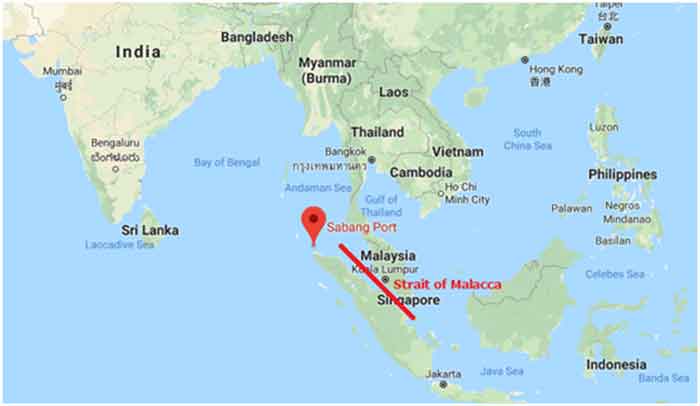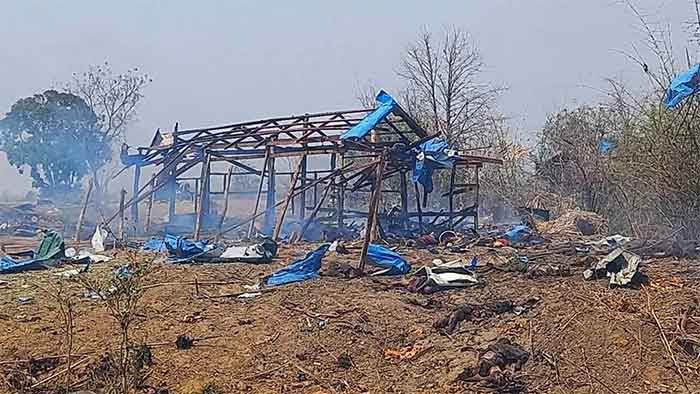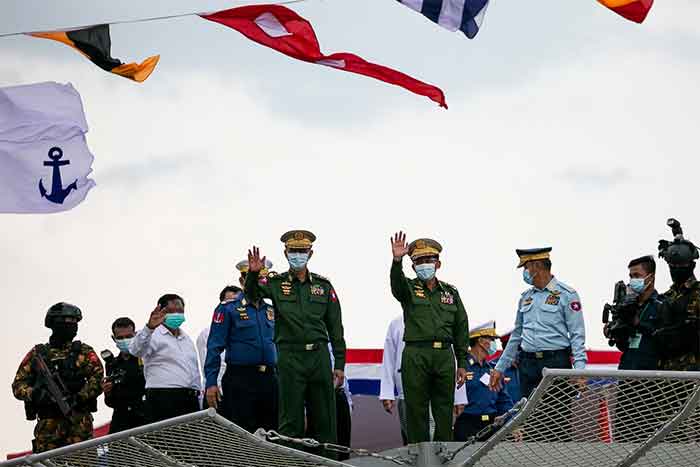
This is third in the series on the flux in the global scene by the seasoned diplomat, an expert on Middle East, Eurasia, Central Asia, South Asia and the Asia-Pacific…Fourth will follow.
“To be sure, Myanmar saga is far from a binary of democracy vs. autocracy….Beware of “colour revolution” that the Western intelligence , US and UK in lead role , have been fomenting.”
***
India did the right thing by dissociating from other “Quad” members to join the defence attaches of Myanmar’s neighbouring countries and attend the parade on Saturday in Naypyitaw to mark the Armed Forces Day — although pro-American proxies in the media have voiced some misplaced indignation.
Evidently, New Delhi attaches high importance to the security cooperation with Myanmar. This reflects a realistic assessment that the Myanmar military remains an enduring factor in regional politics and current history.
A “boycott” of the military is impractical while cordial ties have proven to be helpful to safeguard the security of the volatile northeastern regions.
Bangladesh also has taken a similar pragmatic attitude, despite the Rohingya issue. Indeed, compulsions of geography cannot be ignored in inter-state relationships. In fact, eight defence attaches of resident diplomatic missions in Myanmar took part in the ceremony in Naypyitaw, drawn from the 42 foreign embassies in Myanmar (many of whom don’t have resident defence attaches.) These eight countries included 3 ASEAN members and two veto-holding UN Security Council members (Russia and China.)
In a notable development, Russia was represented by Deputy Defence Minister Alexander Fomin, a key figure in the security establishment in Moscow. Myanmar’s commander-in-chief Senior General Min Aung Hlaing received him. The Russian press quoted Fomin as saying that Moscow “adheres to a strategic line to intensify relations between the two countries” and considers Myanmar “a reliable ally and strategic partner in southeast Asia and the larger Asia-Pacific region.”
The Kremlin has given a powerful, resonant signal. Apart from being a gesture of support for the Myanmar military leadership of Gen. Hlaing, whom Moscow regards as a reliable friend — the general has visited Moscow 6 times in as many years — it puts a firewall against the “colour revolution” that the Western intelligence — US and UK in lead role —have been fomenting in the Bamar-majority cities of Yangon and Mandalay in the recent weeks.
With battle lines openly drawn amongst the big powers, the prospect of the UN imposing any sanctions against Myanmar is receding — although UN Secretary-General Antonio Guterres who is seeking another term in office with US support is nowadays generally helpful by voicing opinions.
The clumsy unprecedented move by the chiefs of defence of 8 NATO countries and Japan, South Korea, Australia and New Zealand to issue a condemnatory statement against the Myanmar military Saturday only shows what a high-stakes diplomatic pirouette Myanmar is becoming. Fomin’s visit highlights the geopolitical struggle endemic to our transformative era.
Warning bells must have rung in Moscow following the mobilisation of the pro-western non-Bamar ethnic separatist groups lately by British intelligence to create another “front” for the Myanmar military. The attack by the so-called Karen Liberation Army — make no mistake, KLA is a creation of British intelligence — on the Myanmar military and its capture of a military outpost on Saturday morning on the remote eastern border with Thailand is an indicator of the shape of things to come.
In the bloody encounter, eight government soldiers including a second lieutenant of Myanmar army were captured by the separatist guerrillas and 10 killed, including a lieutenant colonel who was deputy battalion commander.
This is an important turning point, as the western powers intervening in Myanmar have made their first lethal move to bleed the Myanmar military in a protracted guerrilla war with the minority ethnic groups in the remote lawless border lands, even as it is brought under pressure by protestors in central region who are animated from London by the BBC and kindred media organs such as Radio Free Asia plus the social media.
The game plan is to stretch the military’s resources and demoralise and fragment it by entrapping it in virtual civil war conditions. China has a troubled relationship with the Myanmar military and has no intentions to step in despite western taunts and provocations. That leaves Russia as the mainstay of support of Myanmar military (aside the Thai military next-door, which is also combating separatism by pro-western ethnic groups.)
For the regional countries bordering Myanmar — China, India, Bangladesh, Thailand and Laos — it will be a source of great concern that the security situation can degenerate into anarchical conditions, as had happened in Afghanistan or Iraq, Syria and Yemen following western interventions.
To be sure, Myanmar saga is far from a binary of democracy vs. autocracy. (Alas, Indians whose grasp of their country’s neighbourhood is generally very poor, lack understanding of the stark realities of Myanmar’s complex transition to democratic rule, warts and all.)
Significantly, after a period of hiatus, the student-led protests are reviving in Bangkok too — eerily similar to the protests in Yangon and Mandalay. The protestors in Bangkok are calling for the resignation of the government of Prime Minister Prayut Chan-o-cha (who is supported by the military) and for replacement of the country’s semi-democratic constitution. In Wednesday’s protests in Bangkok, activists splashed a royal portrait with paint and attempted to set it on fire.
The prestige of the king, a venerated figure, and the country’s strict lese majeste law are for the first time openly in the protesters’ crosshairs. As in Myanmar, there is also a thinly-veiled evangelist agenda. The Thai king and Buddhism are not only cultural symbols for the deeply religious Thai nation but also emblems of national unity through centuries — similar in many ways to Hinduism through millennia of Indian history and civilisation.
In the contemporary setting, when institutions such as the Myanmar military or the Thai monarchy are attacked, discredited and weakened, the outcome will be anarchical conditions that can be exploited to create pro-western surrogates in the region — and for the evangelist mission to create Christian enclaves in a brave new Asia under western tutelage. Indeed, the Pope selected Myanmar and Thailand (and Bangladesh) for undertaking visits in the most recent years. (India reportedly was cool to a papal visit.)
What is the geopolitical agenda here?
Evidently, both Myanmar and Thailand can provide access route for China to the Indian Ocean bypassing Malacca States in Singapore, which is a western outpost in southeast Asia. (Ironically, Singapore, a police state basically, is towering high as the most vociferous ASEAN country to clamour for western democracy in Myanmar!)
Second, Myanmar and Thailand give potential beachhead to the Bay of Bengal, which has been until recently an exclusive Indian lake, bypassing the Malacca Strait. Whereas, for the US, control of Bay of Bengal and the Malacca Straits means control of the sea lanes of the Indian Ocean, which is crucial to an “Asian Century”.

This is where Indian strategists have to think very very carefully and in depth — and with far-sighted vision — as to where the country’s interests would ultimately lie. Alas, when Indians propagate Quad and the “Indo-Pacific” concept, they blithely overlook that nations are trapped in history, and history is trapped in nations too.
Enter Fomin. Russia senses that India is passing through a particularly challenging phase in its post-independence history, torn between its strategic autonomy and the western alliance that sections of its elites are today longing for. Moscow sees that the US is systematically institutionalising the Quad and transforming it as a multinational alliance. Expectedly, we can see only the Russian footprints on the sand today, although Moscow is also carrying forward India’s long-term interests in the Bay of Bengal and the Indian Ocean.
Ideally, this should be a joint Russian-Indian-Chinese common enterprise of three emerging powers with overlapping strategic interests to transition toward a democratised world order away from the oppressive, unequal western-dominated one of present-day. That may appear wishful thinking in the prevailing circumstances — nonetheless, it remains a thoughtful wish.
***
Posted in his blog on March 29, 2021 by M. K. BHADRAKUMAR
Ambassador M K Bhadrakumar served the Indian Foreign Service for more than 29 years. He introduces about himself thus: “Roughly half of the 3 decades of my diplomatic career was devoted to assignments on the territories of the former Soviet Union and to Pakistan, Iran and Afghanistan. Other overseas postings included South Korea, Sri Lanka, Germany, and Turkey. I write mainly on Indian foreign policy and the affairs of the Middle East, Eurasia, Central Asia, South Asia and the Asia-Pacific…”
His mail ID : [email protected]
GET COUNTERCURRENTS DAILY NEWSLETTER STRAIGHT TO YOUR INBOX















































